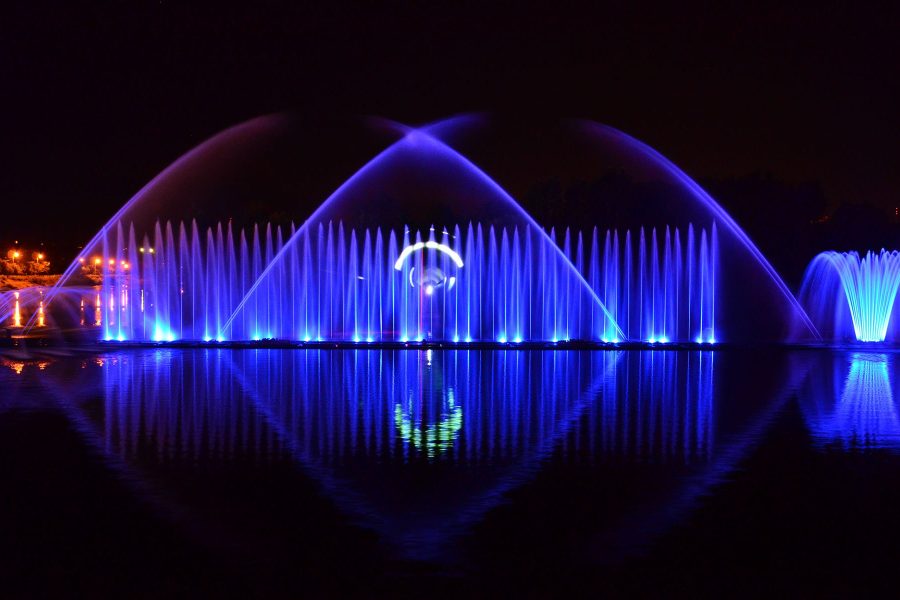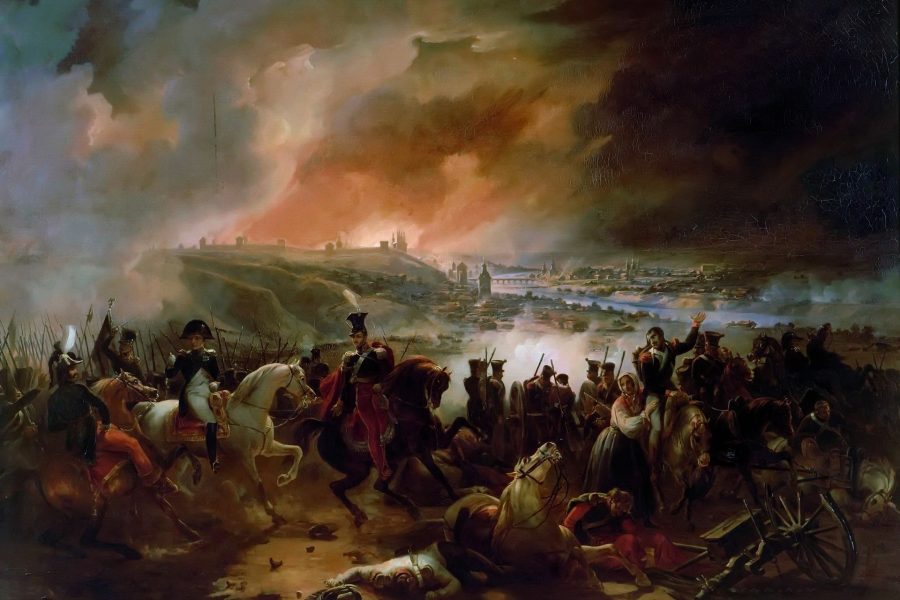Naming things is harder than you might think, at least for some people. The internet is littered with stories of dubious veracity claiming that baby-naming consultants are paid tens of thousands of dollars to help wealthy people name their children. And even if they're not real, there are plenty of websites out there that will help you name a baby, a pet, or anything else.
We love deep names that have meaning and history. But sometimes a name just has a quirky and unexpected origin. Let's take a look at some of them.
10. Buffets in Japan are called Vikings because the word "buffet" is difficult to pronounce in Japanese.

For some people, there is no greater joy than going to a buffet. Just a huge selection of food from which to fill up for a set price. Although America has some of the largest buffets in the world, they can’t claim credit for the idea. It was the good people of Sweden who first formalized the idea of this continuous meal. They called it a smorgasbord, and the idea was to feed guests who had traveled a long way to see you. So you simply left a spread and replenished it as needed as people continued to come to eat.
Jumping across the world to Japan, we find not a buffet, but a Viking. In Japan, you’ll see signs advertising buffets with English slogans like “Viking Lunch.” This dates back to 1957, when Teikoku Hoteru, manager of the Imperial Hotel in Tokyo, went to Sweden and discovered his first buffet. He loved the idea, but hated the name, since translating it into Japanese was a hassle and a half. But the Kirk Douglas film Vikings had just come out, and they were both from the same country, so it seemed like a reasonable concession. The buffet became a Viking, and has remained one in Japan ever since.
9. Ritter Sport chocolate was named after pockets
Have you ever tried a Ritter Sport chocolate bar? They're not as common as Snickers, but they stand out from the crowd thanks to their square shape. The name, however, is a little misleading. Even without any history, you could guess that perhaps Ritter was the name of the company or inventor. But why Sport? Chocolate is hardly a sports food as most people know it. Turns out, it's the square shape again.
When the chocolate was being developed in 1932, one of the co-founders thought it would be smart if the bar could fit in your pocket. Specifically, she wanted a chocolate bar that could fit in a sports coat pocket that wouldn't break or flap around so you could lose it or damage it. And for that reason alone, it got the name sport. So if you ever get tired of a chocolate bar breaking in your sports coat pocket, you know what to do.
8. Emergency sirens were named after mythological creatures.

Is there anything more useful and annoying at the same time than an emergency siren? You're glad to have one when you need it, but if they ever go off by accident or as a test, they're just annoying.
The modern emergency siren traces its origins to Charles Cagniard de la Tour, who created the first true siren as we understand it today. The noise was what gave rise to the name, as Cagniard de la Tour was obsessed with the idea that the device could be heard even underwater, and if there was one shrill thing that people were known to hear from the water, it was sirens of the mythological variety.
In Greek mythology, sirens were known to lure sailors to their deaths with their irresistible song. Ideally, an emergency siren would prevent death, but that's neither here nor there.
7. Sea urchins were named after hedgehogs.

Have you ever wondered why sea urchins are called sea urchins instead of just hedgehogs? It seems like there should be a land urchin in there, right? There was! And that's very important to how the sea urchin got its name.
Once upon a time, the humble hedgehog was known as a urchin. It was a Middle English word for a spiny little mammal. Like urchins, sea urchins are covered in spines, and when an urchin is curled up, they look a bit like one another. So for a while, it made sense, and sea urchins were even called sea urchins for a while. Obviously, the passage of time has allowed us to separate them, especially due to the fact that they have little in common beyond a very basic resemblance.
6. Military tanks were named after a trick

Tanks have played a huge role in warfare since World War I, when they were first deployed and proved their impressive strength on the battlefield. Modern tanks have come a long way since then, and the word has become so ubiquitous that if you play online games, characters that are supposed to be strong and withstand a lot of abuse without much grace are often referred to as tanks. But what does the word even mean when it comes to machines?
Traditionally, a tank refers to a collection container. Your gas tank, your fish tank, whatever. But a massive gun-toting fighting vehicle doesn't have much in common with such things.
It turns out that when tanks were being developed, the process was very secretive. So when the British were developing them, they pretended they were making water tanks. The idea was that they were just devices to deliver water to soldiers in desert areas. But that's what everyone who worked on them called them, to maintain the ruse, and the name stuck.
5. We call political parties left and right because of their place in France

Few things are as fraught with tension and division these days as politics. The mere mention of “left” or “right” is enough to make some people angry at their friends and neighbors. And while the reasons for any given discourse may vary, taking a step back to determine where you sit in that discourse will open up your own unusual jar of words.
Regardless of your own politics, the reason you can qualify as left or right, not ideologically but semantically, is a bit odd. After all, what do these words even mean? Left and right are almost always used to distinguish subjective directions. In political terms, that's where the terms come from.
In modern parlance, left usually means liberals and right means conservatives. This goes far beyond American politics and the parties that most closely share these views. We get both terms from the French parliament, formed immediately after the French Revolution.
In the French National Assembly, if the speaker faced the assembled politicians, on his right were the nobles and religious leaders, who held more conservative views. They tended to favor the aristocracy and the upper class. On the left were the common people and the revolutionaries, whose interests were more connected with the middle-class citizens and changing the policies of the old. If the seating arrangements had been different, we would probably have different conditions today.
4. There are two theories why pants are called a pair.

Have you ever heard someone joke about why we call pants pairs when there's only one? It's not exactly a good joke, but it does at least raise an interesting point. Pants aren't technically a pair of anything, so how did they get that name? The answer is that they used to be a pair of things, and we just simplified the design, but we never agreed to change the name.
There are two possible explanations for the multiple pants, but it is difficult to determine which is the sole source of the duality.
A more down-to-earth theory is that trousers are one of those unusual but not entirely unheard-of “plural tantum” or “plural only” words. We have several such words in English, words that are always plural and refer to singular things but are made up of two parts. Like trousers, there are glasses, scissors, pliers, and so on. We call them all pairs because they are made up of two parts in one whole.
A funnier theory, but one that doesn't really have a ton of evidence to back it up, is that pantaloons were once essentially two pieces. The idea was that you'd put on each leg of your pants separately and tie them together.
3. Noble gases are called more or less offensive

Who doesn't love the periodic table, with all its lanthanides and actinides? And there are the noble gases, which sound pretty fancy. But scientists aren't big on naming things out of thin air, so where does the noble part of the name come from?
The seven noble gases of the periodic table include substances such as argon and xenon, and they were named by German chemist Hugo Erdmann. Because the gases do not react with other elements on the table, he called them noble. This is essentially a mockery of the upper class, because, like the nobility, the gases have nothing in common with everyone else.
2. The cells were named after the rooms in the monastery.

Every child in biology class will have a day when they get out a microscope and look at an onion skin or something similar at high magnification. Most likely, this will be your introduction to the world of cells, and you will be able to see them as clear as day through a microscope. all kinds of biology, biochemistry, genetics and much more.
But if you rewind it and put aside the exact science for a moment, you can focus on the name itself. Cell. All living things are made up of cells, and different cells form different structures with different functions, but we still call them cells.
Robert Hooke is the man who gave us the word, and he chose it after creating a microscope advanced enough to allow him to see cells in a piece of cork. The cells, in his view, were like the rooms in a monastery, all lined up together like little boxes, also called cells.
1. Polka dots were named to capitalize on the popularity of the polka dance.

The polka dot pattern is instantly recognizable around the world. After all, it's pretty simple, consisting of circles or dots of one color on a background of another color. Typically, the dots are all either the same size or arranged in the same pattern, but it's unlikely that anyone would be such a stickler for the rules that they'd call you out if you called the wrong size dots polka dots.
The name polka dot is, of course, a bit of a quirk, since polka is a form of dance and music, and is not particularly known for dots at all. It first appeared in the 1800s, with print examples appearing in 1857 and around.
The polka, a dance, came to us from Bohemia in the 1830s and is often associated with Polish culture, where it was warmly embraced. So you see the difference of 20-odd years between the birth of the dance and the polka dot itself. The connection between the two is that the dot was, so to speak, on the coattails of the dance. The dance was popular when the polka dot first appeared, so to capitalize on that popularity, the pattern was named after the dance. Other than that, they have nothing in common.













Оставить Комментарий